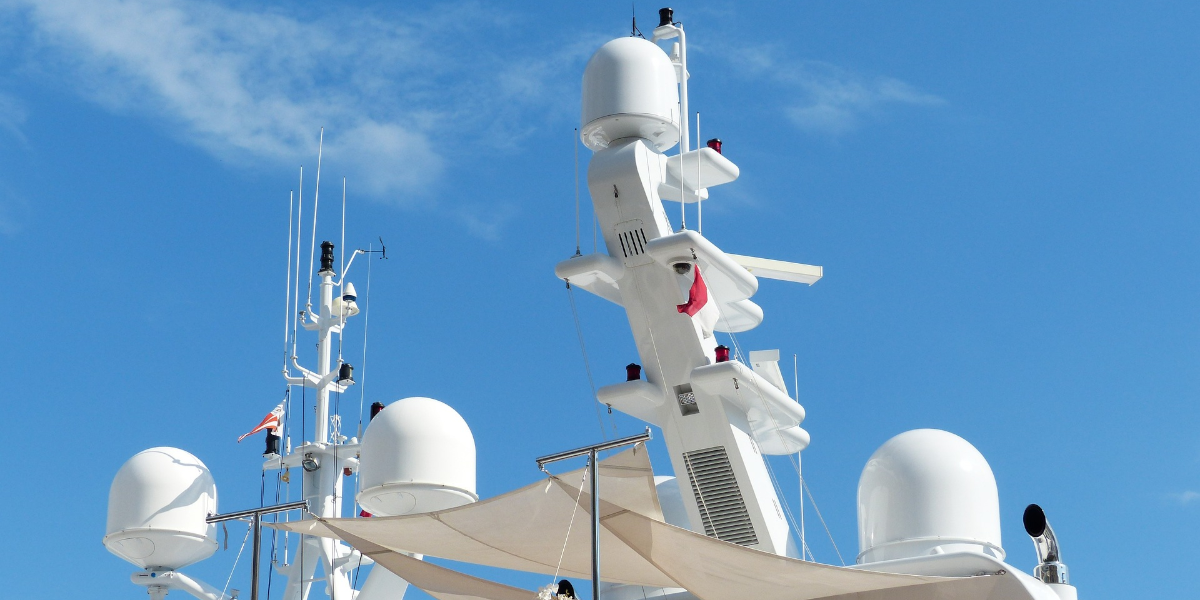During a combat training exercise, naval air group CSG 11 (Combat Surface Group 11) detected radar anomalies on one of its cruisers, and then on an E-2 Hawkeye. Two F18s were then sent to the site to detect one of the anomalies.
How was a UAP detected?
You can read all about the 2004 encounter between the ‘Tic-Tac” UAP (Unidentified Aerial Phenomenon) and the F18 from the CSG 11 naval air group in detail in a presentation from 3AF (Association Aéronautique et Aérospatiale de France)’s Sigma2 committee, as well as in our article.
Here we will concentrate on the means used to detect the presumed objects and put forward a hypothesis as to how this was possible. We will look at the operating principles of the two types of radar used at the time of the encounter and put forward a hypothesis as to how the objects could have been detected by the SPY1.

How the SPY-1 radar works
The SPY-1, which was the first to detect the UAP aboard the Princeton ship, is a phased array radar. It is made up of a multitude of small fixed antennae forming a grid.
A conventional radar turns on itself to transmit in all directions, sending out a pulse and listening for echoes to detect objects. In the case of a spy-1 radar, the direction of transmission is controlled electronically by shifting the phase of the signal between the small antennae. This results in a different orientation depending on the phase shift (angle).
The SPY-1 offers search, tracking, and missile guidance capabilities. It is an integral part of the Aegis combat system, and is designed for multi-mission operations.
The main technical difference between these radars lies in the way they transmit and receive signals. Phased-array radars like the SPY-1 can scan a large sector of space much more quickly and flexibly, which is crucial for multi-functional missions. Doppler pulse radars, such as the APS-150 and APG-73, are more specialized in detecting the speed of objects.
Each has its own advantages and disadvantages: phased array radars are generally more expensive and complex, but offer greater flexibility and multitasking capability. Doppler pulse radars are often simpler and less expensive, but may be limited in the range of missions they can effectively perform.
To our knowledge, during the Nimitz incident in 2004, only the Princeton's SPY-1 radar and the Hawkeye's APS-150 detected the UAP.

How was the SPY 1 able to detect the UAP in passive mode
The passive mode, known as 'listening', listens in on its surroundings using third-party transmitters (satellite, TV, radio, etc.), just as if you were monitoring an insect in your garden using candles placed on the ground, without pointing your torch directly at it.
The SPY-1 radar is a key component of the Aegis combat system used by the United States and allied naval forces. This multifunctional radar system can operate in various modes, including passive mode.
In passive mode, the SPY-1 radar acts as a receiver without emitting signals. Instead, it listens to electromagnetic emissions from other sources (and the echoes induced by them), such as radio communications or radar signals from ships and satellites.
The main advantage of passive mode is that it allows detection and tracking without revealing the radar's own position or even its presence. This is particularly useful in infiltration or surveillance operations, where it is crucial to remain undetected for as long as possible. In addition, because it relies on existing electromagnetic signals, passive radar is less subject to jamming or electronic countermeasures aimed at active radar signals.
However, it does have its limitations. Passive radar generally requires more sophisticated data analysis, as the signals it uses are not designed for radar purposes. This often involves complex algorithms to correlate the signals received with the location and movement of the object. In addition, its performance can be affected by the density and quality of the signals available in the operational environment.
The passive mode in radar systems such as the SPY-1 can offer specific advantages for UAP detection. In electronic warfare, attention is paid to the echo that is sent back in order to be detected as late as possible, or even to pass off as something else. This is called 'Radar Cross-Section'.
One tries to reduce the RCS as much as possible, or, as mentioned above, to have devices that imitate the RES of another device on a certain frequency band.
That way, the passive mode, which uses "classic" (non-military) frequencies, can bypass these countermeasures.
Electronic filtering and detection computing also play a key role in this process. In a complex environment where many signals may be present, electronic filters can isolate the signals of interest from background noise or interference. Sophisticated algorithms can then be used to analyze these passive signals and determine the object's characteristics, such as its speed, direction, and altitude.
It is also possible for UAP to have characteristics that make them difficult to detect with conventional active radars. For example, if a UAP uses some form of stealth technology or is designed to avoid specific radar frequencies, a passive-mode radar might have a better chance of detecting it by capturing unintended emissions from the object, or by using signals from other sources.
Passive mode can offer a more unobtrusive and potentially countermeasure-resistant detection method, with the ability to use electronic filtering techniques and advanced detection algorithms to identify UAP. This ability to operate more stealthily and exploit a variety of environmental signals makes passive mode a relevant option for the detection of unidentified aerial objects.
If you want to build a small passive radar system yourself, it's possible! Watch this video.

